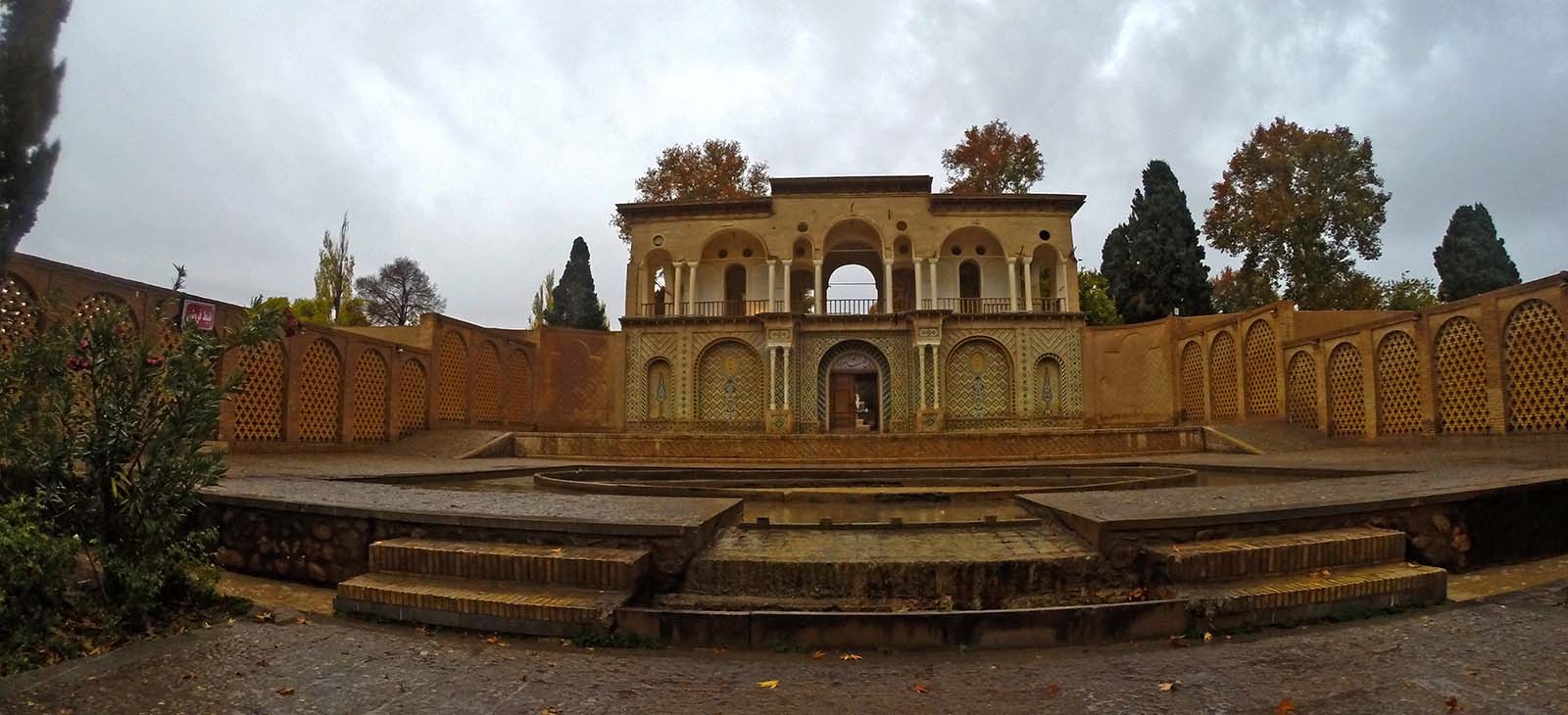Shazdeh Garden, a green oasis surrounded by a brown desert with a collection of pools leading to a large palace was once the summer residence of a prince, for which it is called Shazdeh garden.
Shazdeh Garden (Bāgh-e Shāzdeh) meaning Prince’s Garden is a historical Persian garden located near (6km away from) Mahan in Kerman province, Iran.
Shazdeh Garden, a green oasis surrounded by a brown desert with a collection of pools leading to a large palace was once the summer residence of a prince, for which it is called Shazdeh garden.
This remarkable garden with a beautifully designed façade, a rectangular shape is surrounded by a wall. Other than the main residential building, at its entrance the Garden also consists of a two-storied building for which the second floor was used as living quarters and for receiving guests. Other smaller utility rooms are situated along the sides of the Garden. Amongst them a few side entrances also connect the Garden to the outside.
Constructed in the traditional style, Shazdeh Garden has two pools in a terraced fashion. Water fountains can be seen over the land flowing from the upper ends toward lower ends on a water cascade style at Shazdeh Garden. These fountains look very beautiful and have been provided impetus by the natural incline of the place.
The clever use of the natural climate of the land can be seen in this garden which is the primary aspect of every Persian garden. This long landscape is hidden by the huge size of the main structure and is reinforced by the trees at both sides having different colors at different seasons.
The garden itself consists of a variety of pine, cedar, elm, buttonwood and fruit trees. The selection and configuration of plants in Mahan Shazdeh Garden plays a determinative role in the garden’s identity. The trees and vegetation seen in the bed of Shazdeh Garden are in the order as follows:
• Evergreen and windbreak trees such as pine and cedar
• Shady and wide-leaf trees such as rowan, sycamore and aspen (In addition to their importance in creating shadows, these trees are resistant to the region’s climate)
• Ornamental plants including ornamental cedars, and ornamental juniper, yielding pint size blossoms in winter.
• Fruit trees, planted in both side plots, especially create unique view when seen from the upper routes.
Tree reflections, the façade structure and the gazebo have contributed to a relaxing feel about the garden, one of peace and solitude. Light and shade play a significant role in this landscape.

